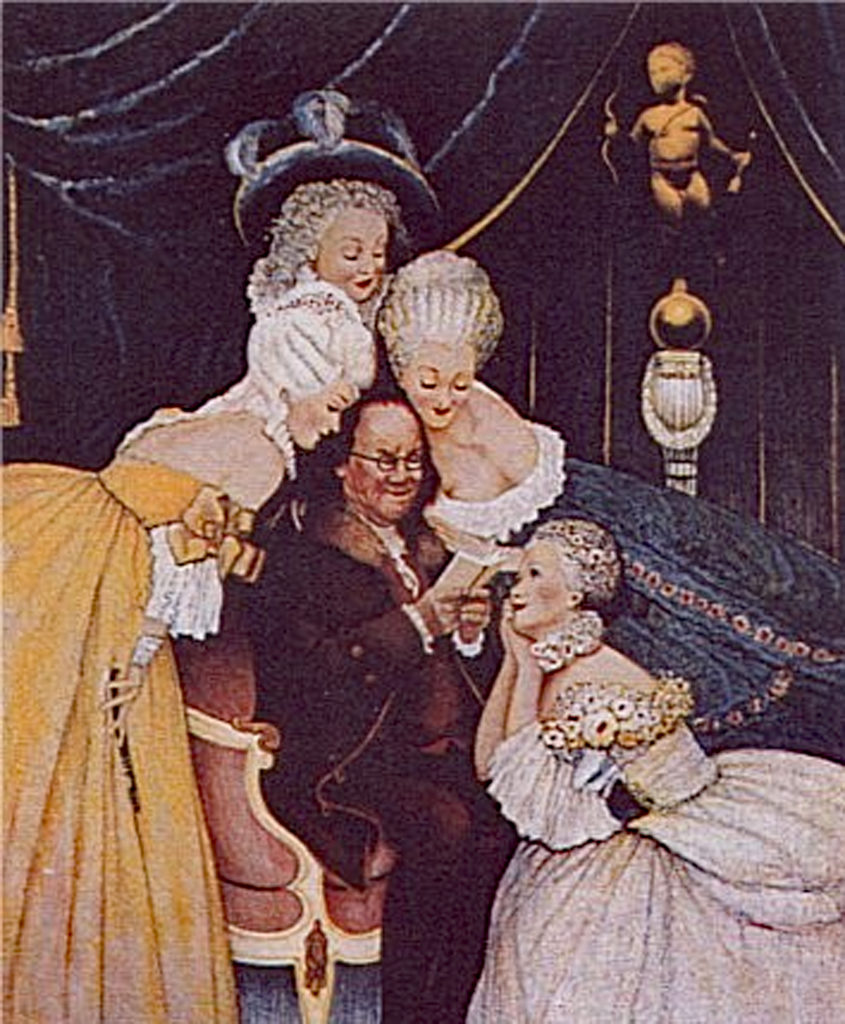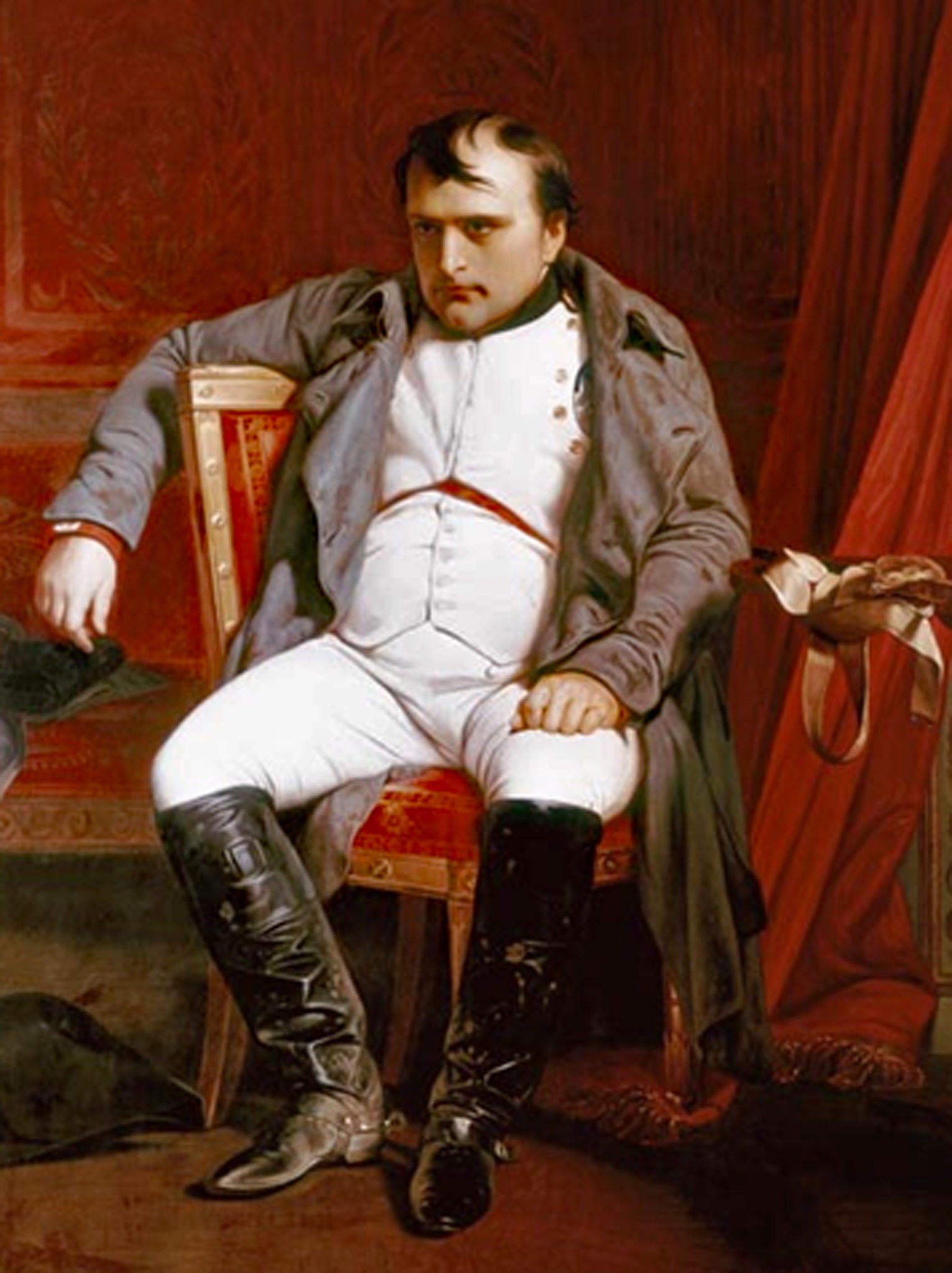TED Talk – French History, Part Deux

Alexandria, VA -“So, ask the travelled inhabitant of any nation, ‘In what country on earth would you rather live?’ Certainly, in my own, where are all my friends, my relations, and the earliest and sweetest affections and recollections of my life. Which would be your second choice? France.”
– Thomas Jefferson
America has enjoyed a love affair with France for two centuries. I call it a love affair and not a marriage because it has been a relationship fraught with passion, excitement, arguments, endearment, fire-and-ice make-ups and break-ups, misunderstandings, and rapprochement.
We never officially tied the knot, but it has been an enduring on-again-off-again affair like few others. George Bernard Shaw’s remark about the strong relationship between Great Britain and the United States, “England and America are two countries separated by a common language,” is where the description of a “marriage” fits. We have enjoyed that warm, calm, comfortable, complacent constancy of relations with Great Britain since the mid-nineteenth century. France, however, has been our version of Elizabeth Taylor and Richard Burton[1].
During the early days of our fledgling country, we sent several of our Revolutionary headliners over to France to do what Americans have turned into a uniquely American art form – wheeling and dealing. Benjamin Franklin served as our first man in Paris from 1779-85. By all accounts, he was very successful in obtaining France’s logistical and manpower support for our revolution. His street cred with the French aristocracy and intelligentsia was due to his scientific experiments and inventions.
Franklin, ever the astute observer, cozied up to many of the wives and mistresses of the A-list French, much to the chagrin of our #2 man in Paris, John Adams, who wrote in his diary, “These incessant dinners and dissipations were not the objects of my mission to France.” Franklin clearly understood that French culture dictated mixing business with pleasure, a concept of which Adams was clueless. Apparently, Franklin thoroughly enjoyed his time there, earning him the unofficial moniker of “Father of his Country” around official and social circles in Paris.
After the American Revolution, George Washington’s adopted son Lafayette said goodbye to George and Martha, grabbed a boat back to France, and walked into a hornet’s nest of disaffection. As you recall from our last episode (French History, Part I), the French Revolution quickly followed ours. A major cause was the aristocracy’s ignorance of or inability to relate to the plight of the working class of France. Food shortages, rising prices, and wild, extravagant parties held in many Chateaus[2] had a bit of a negative PR effect on the regular folks around the country.
So, in true passionate French spirit, the workers revolted, executed scads of the upper class, and after several years of chaos, formed a new representative government called the First Republic. It wasn’t a rousing success. Even though the new representative government penned a whopper called the Declaration of the Rights of Man, it didn’t do much to lower the price of a loaf of bread. French women became really crabby because their kids were hungry, prices were still through the roof, and they couldn’t care less about who did or didn’t take the “Tennis Court Oath” of allegiance.
Although France was the big reason we defeated the British in our revolution, relations soured when we chose to stop payments to the French government for all their help. From 1798-1800 what was called the Quasi-War with France began. She retaliated with a commerce war at sea, sending French privateers to attack American merchant ships. President John Adams was so fit to be tied with the French that he sent our Navy to the Caribbean to kick some derriere. This was the first time Congress authorized military action without a formal declaration of war.[3]

It was also a time of firsts in France. France’s First Republic lasted until a guy named Napoleon Bonaparte showed up with his Army of the East, launched a coup d’etat, got rid of the First Republic gang, and became First Counsel and then later Counsel for Life.[4] This was called the First Empire. Napoleon crowned himself Emperor in Notre Dame Cathedral on December 2, 1804, by taking the crown from Pope Pius VII and placing it on his own head.
Then Napoleon started running the French Army all over Europe, conquering every tourist attraction as well as many places that people had never heard of until nearly every acre of land was owned by France. In 1814 a coalition of German, Austrian, Prussian, and Russian Armies got miffed and marched into Paris. They sent Napoleon into exile on the Mediterranean island of Elba, his old stomping grounds.
Then the French installed yet another Louis, this time Louis XVII, but he was ten years old, and if you blinked, you would have missed his reign. Napoleon and a bunch of his old Army veteran buddies showed up in Paris and reinstalled him as Emperor.
Life was good for about 100 days. Napoleon, the adrenalin junkie, massed his troops against the British under Lord Wellington and lost the Battle of Waterloo. Since Napoleon kept showing up when one least expected, even in defeat, the British shipped him off into exile again, this time on the British island of Saint Helena, some 4,300 miles from France, just to make sure he stayed exiled. He died five years later.[5]
A flurry of activity restored the monarchy in a veritable musical chairs of Bourbon Kings until 1848 when all of Europe seemed to erupt in revolutions. France installed a president in what became known as the Second Republic. That man ran on a slogan of “order at all costs” and won by a landslide largely due to name recognition. His name was Louis Napoleon Bonaparte. True to his uncle’s genes, he later staged a coup against the government, seized power, and declared himself Emperor.
Because of the family name, Louis Napoleon fancied himself a brilliant military strategist and went to war against Prussia in 1870. Let’s just say that things didn’t go as anticipated and when the Prussians captured Louis Napoleon, the Second Republic folded. Louis Napoleon has the dual honor of being the first President of France and the last Monarch of France.
Once again, France danced with a republican form of government, naming it – you guessed it – the Third Republic. But due to the potential of more Napoleons showing up, the French decided that power should not rest with just one guy, so they shifted most authority to the legislature. Then began some 70 years of parliamentary backroom deals being cut, coalitions being formed, and the average cabinet lasting only eight months. Yet, this was the most successful and longest-lived of France’s republics.
The Third Republic was France’s glory years. It expanded its colonial holdings in North America (Canada, part of the U.S.), Southeast Asia (Vietnam, Cambodia, Laos – AKA Indochina), South America, Oceania, the Caribbean, areas of China, South Asia (Indonesia), the Middle East (Syria and Lebanon), a bunch of Micronesian islands, portions of India, and ultimately over half of Africa.
There were grumblings by the natives, but the Michelin Map proved the most accurate and popular cartographic item of the 19th century. French cuisine was merging with colonial recipes to create a whole new way of eating. The natives grumbled, but France held firm, expanding its wealth and enjoying the fruits of other people’s labor.
We all make mistakes and France, like most countries, learned from theirs. It took a while, but when France entered the 20th century, it was one of those learning moments. And that, friends, is our next installment of French History – Part III. Stay tuned.
[1] Or ‘Bennifer’ for you millennials out there.
[2] Has a familiar ring to it doesn’t it?
[3] The Supreme Court ruled in favor of the action. Set a precedent for Vietnam and Operation Desert Storm just to mention a few.
[4] Hang in there. The “for life” routine didn’t quite last that long, about as long as a three day-old croissant.
[5] The British government sent special high-tensile strength nails to the mortuary for his coffin to make sure he didn’t rise again.
ICYMI: Alexandria Man Wins a Total of $1 million With 200 Plays in the Same Drawing




